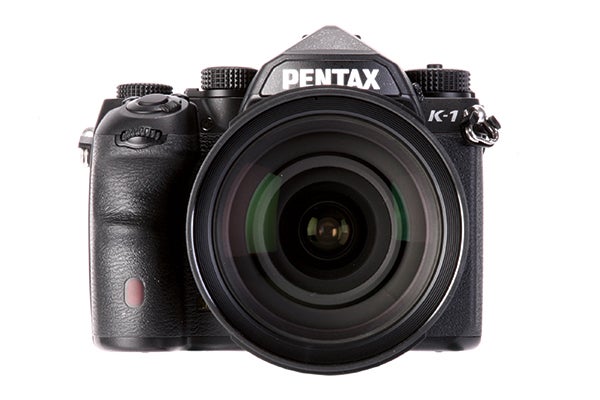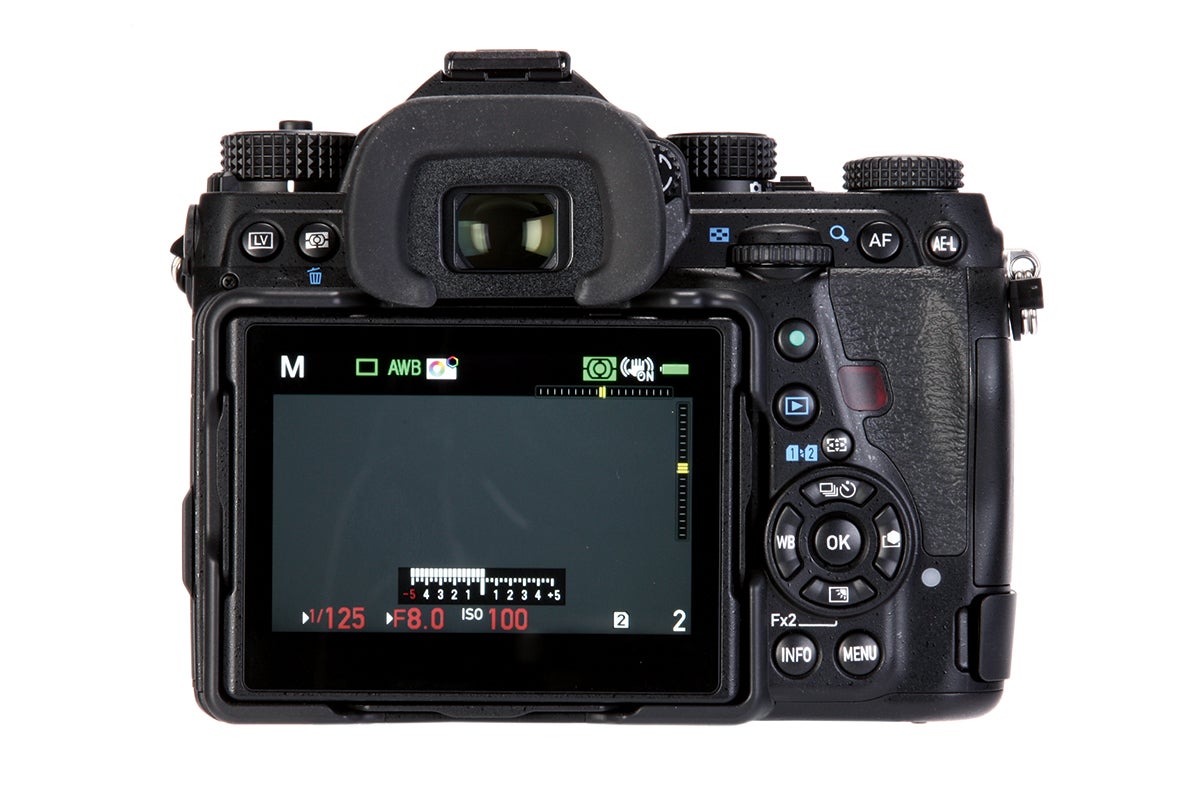The K-1 has the honour of being the first full-frame Pentax DSLR. Matt Golowczynski takes a closer look at this impressively specified camera in this Pentax K-1 review
Pentax K-1 review
Pentax K-1 review: Build and handling
As is typically the case at this level, the camera makes use of magnesium alloy for its body and has been sealed against dust and water incursion with thick rubber doors covering ports and freeze proofing down to -14°C. Weighing just over 1kg with a battery and memory card, it’s not significantly heavier than its immediate rivals, although its relatively narrow width gives it a somewhat boxier design.
The camera’s grip has been well sculpted, with indentations to accommodate middle and ring fingers. The result is a camera that not only feels good when held – and perfectly balanced with a suitable optic such as the HD Pentax-D FA 24-70mm f/2.8 ED SDM WR – but one that remains comfortable after prolonged use.
Considering the body is narrower than that of both the Canon EOS 5D Mark III and Nikon D810, it’s impressive that Ricoh has managed to incorporate such an extensive range of well-sized physical controls without any adverse impact on handling or operation. Furthermore, not only are these controls easily accessible, but the camera also responds to each click of a command dial regardless of how quickly it is turned – something that cannot be said for some other models. In practice, this means that reaching one end of the sensitivity or shutter-speed range from another, for example, can be done very rapidly.
The dial on the top-plate that’s used in conjunction with the Smart Function dial is considerably stiffer than the others, although as this is used less frequently than the others, it isn’t too awkward in use. I’m not entirely convinced the Smart Function Dial is desperately required here, particularly as two of its settings – ISO and exposure compensation – each have a dedicated button right next to it. A similar dial, but with a range of customisable settings, would perhaps make more sense on a model targeted towards an enthusiast/professional audience.
Those acquainted with the Pentax graphic user interface should find few surprises when navigating the menus, while those new to it should be pleased with the way information is displayed. Key exposure information, for example, is shown considerably larger than secondary data.







